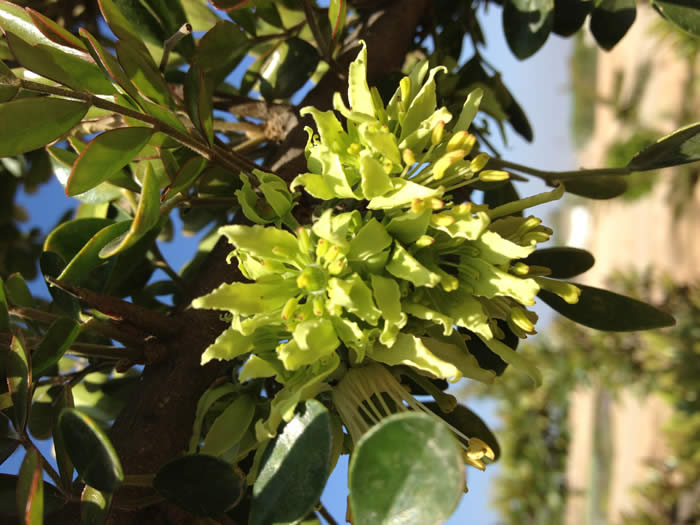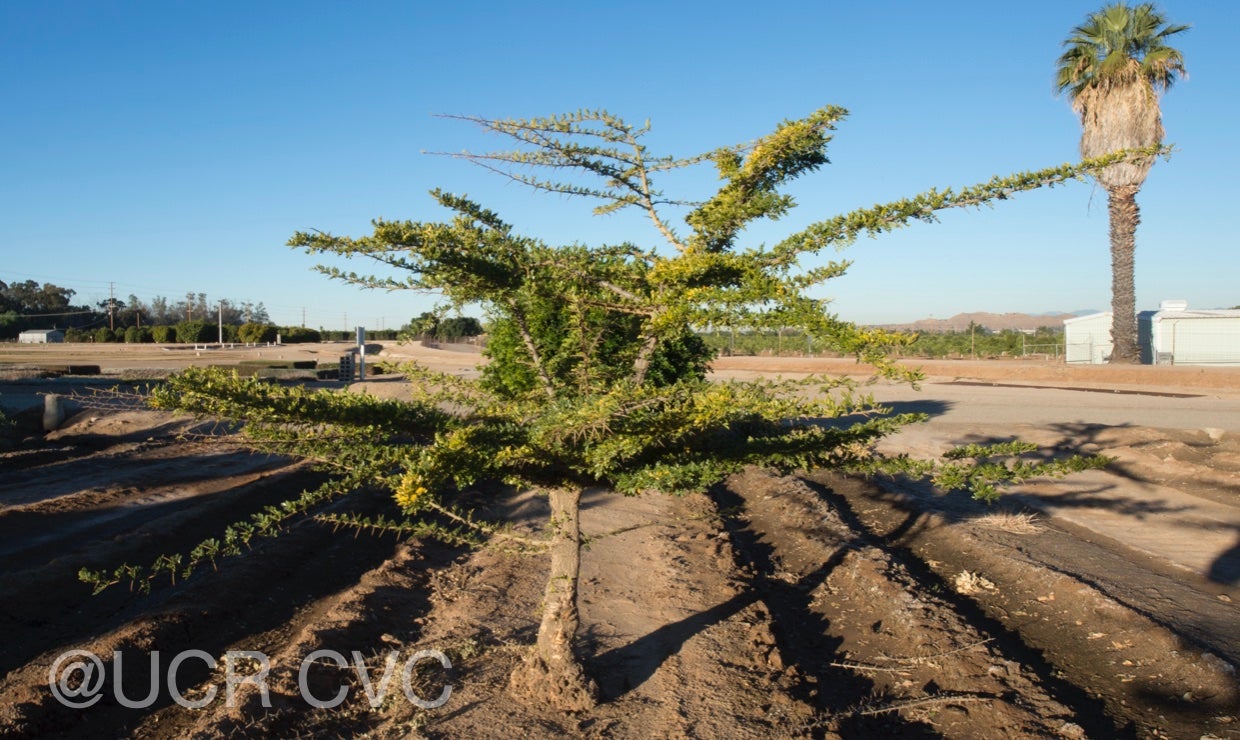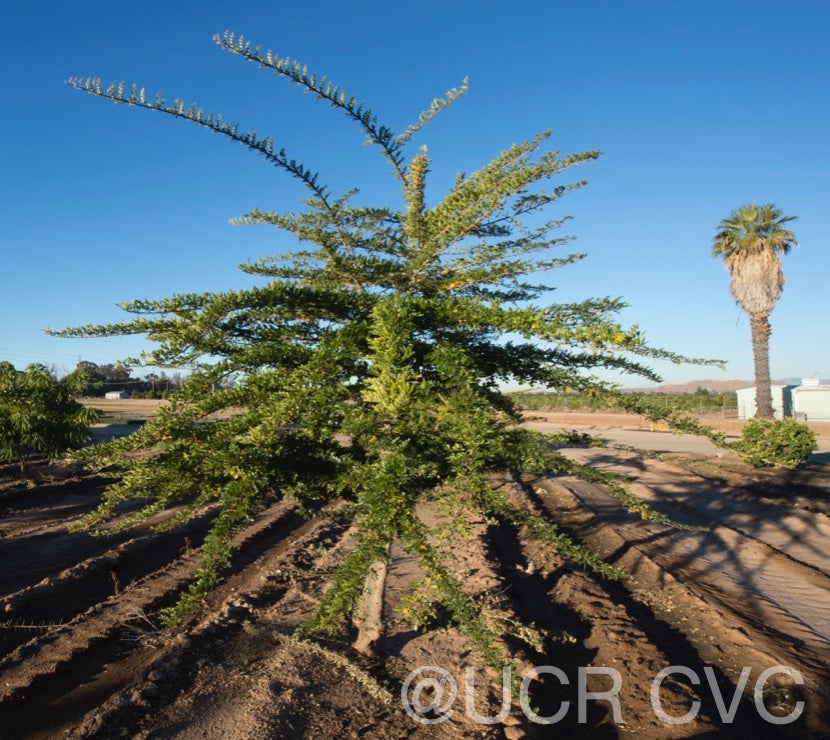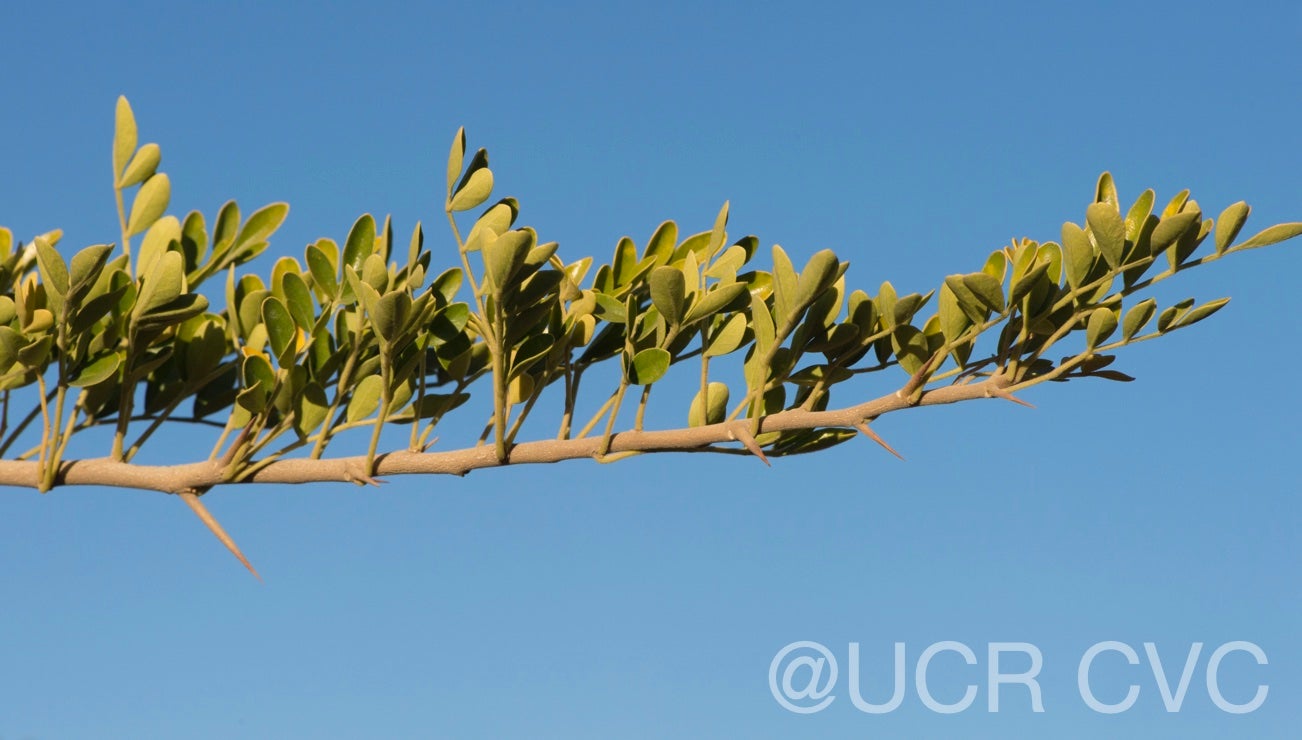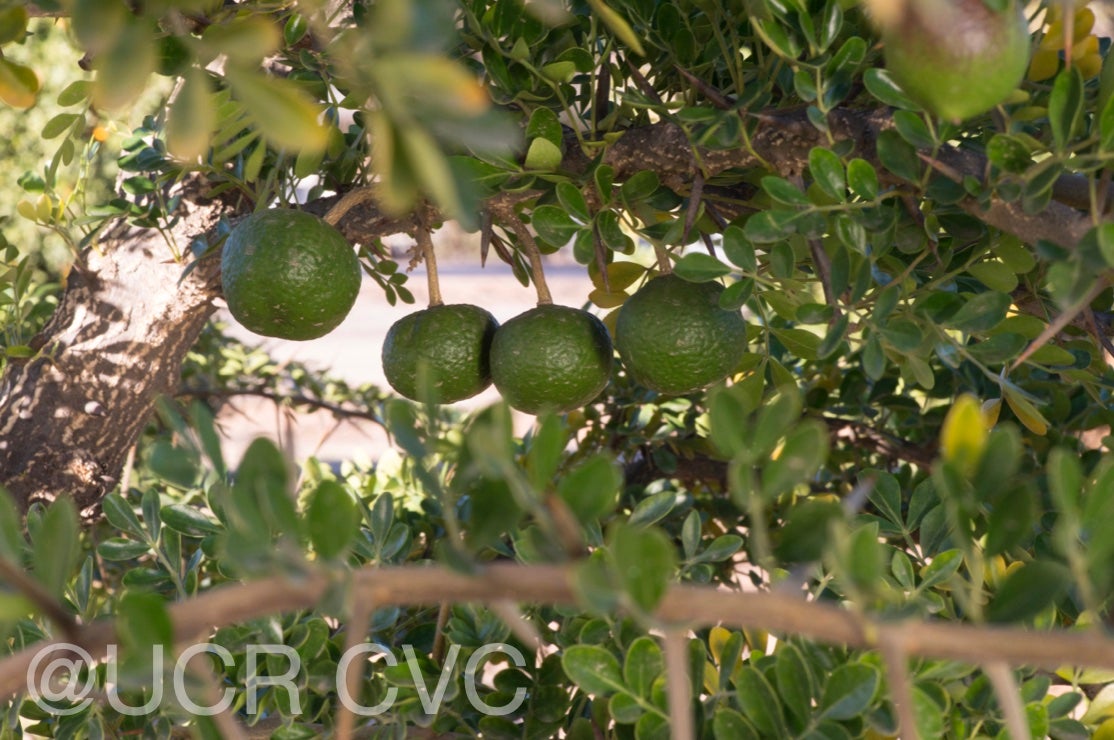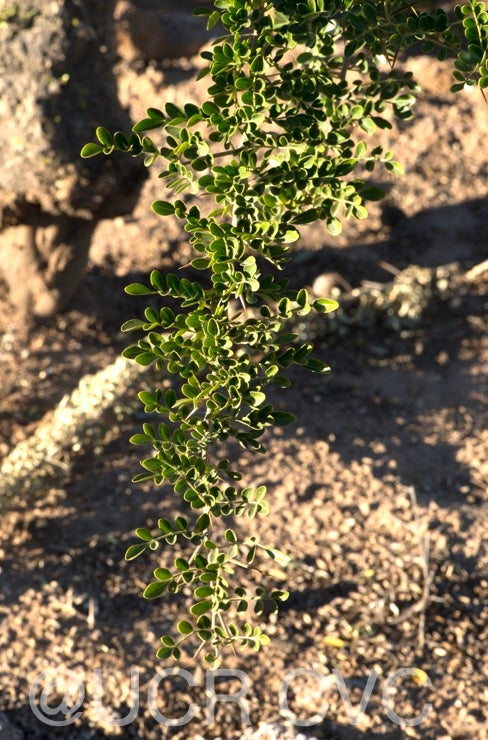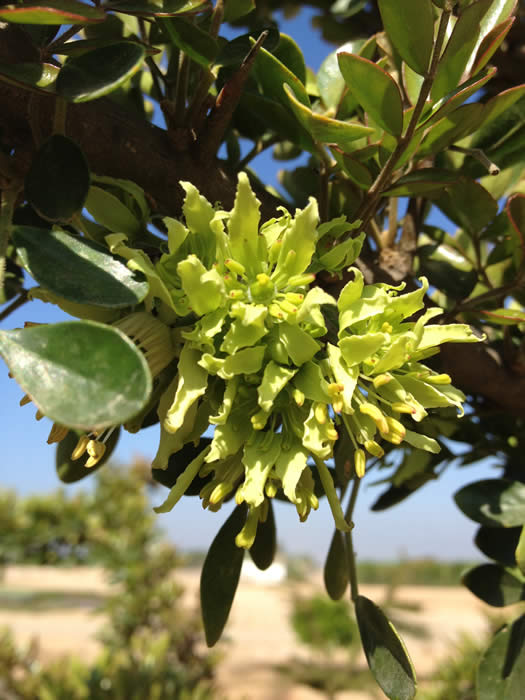Feroniella oblata
Indochina feroniella
CRC 3510
PI 539720
Source
Received as seed from Agric. Exp. Sta., Rio Piedros, Puerto Rico, 1964.
Parentage/origins
Parents unknown.
Rootstocks of accession
Own roots.
Season of ripeness at Riverside
Has not been observed
Notes and observations
Monoembryonic. Too tender for field in Riverside; kept in greenhouse only.
Description from The Citrus Industry Vol. 1 (1967)
"This species is a medium-sized spiny tree, 8-20 m high, native in the eastern part of the Indo-Chinese Peninsula; it is characterized mainly by the leaves with only 7-9 leaflets, which are oval-elliptic or obovate, 2-3 X 1-2 cm, rounded at the apex or slightly emarginate, bluntly cuneate at the base, and the cylindric, pilose petioles, 1-2.5 mm long. The rachis segments are cylindric or narrowly winged. The flowers are grayish-white, 1.5-2.5 cm diam.; sepals very short, 1-2 X 0.5 mm, very pilose, soon falling; petals lanceolate, 1.2-1.8 cm long, with very acute cuneate tips; ovary with 5-6 imperfect locules soon fusing into a single cavity. The flattened-globose fruits, borne in clusters of 3 or 4, are 5.5-6.5 cm wide, 4.5 cm high, and have woody shells, 7-8 mm thick, composed of tapering prisms 1:5-3 mm diam. with the largest end out, and arranged like the stones of a curved arch. The center of the fruit is filled with red flesh said to be edible.
This species, rather common in the forests of the plains and mountains of Indo-China, makes a medium-sized tree, up to 20 meters in height, with brilliant, deep green foliage. The fruits look like small green oranges. Swingle's citation of Lecomte in the synonymy above and the illustrations cited for this species appear to be incorrect. Guillamin [sic] (1911, fig. 72) presents an obvious illustration of Feronia lucida instead of Feroniella oblata. Since Swingle's original notes were not available for clarification, the synonymy is retained intact. Further study will be required to ascertain correct synonymy for Feroniella oblata.
Plants of this species grown in the U.S. Department of Agriculture's greenhouses in the Washington, D.C. area were extremely spiny and had small leaves, only 6 to 12 cm long, with numerous small leaflets and distinctly but narrowly winged rachis. A young tree of this species was observed growing very vigorously in Colonel Robert H. Montgomery's arboretum at Coconut Grove, Florida, in the peculiar sandy-loam and porous-limestone soil characteristic of the extreme southeastern section of that state. The long, nearly straight side branches were extremely spiny. Because of its spiny character, this species should be tested as a hedge plant. As it is clearly related to Feronia, a genus that forces premature blooming of Citrus grafted on it, Feroniella should also be tested as a stock for Citrus."
Availability
Not commercially available in California.
USDA Germplasm Resources Information Network page for Feroniella oblata
